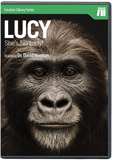Hominid Hopes Dashed
For several years, evolutionists have hailed the find nicknamed Toumai as the missing link between humans and an ape-like ancestor.
In 2001 a chimp-sized cranium, without the lower jaw, was discovered in Chad (east Africa). The lead researcher declared that he had discovered the oldest hominid, an evolutionary ancestor to modern humans.
From the very beginning, though, the cranium has been the center of controversy even among evolutionists, and an increasing number of paleontologists recently have come out against Toumai as a missing link. Creationists are not alone in concluding that many alleged human ancestors are just fossils of extinct species of ancient apes.
There is an increasing, intense competition among anthropologists to find possible human ancestors. As a result, some evolutionists admit that jumping to conclusions based upon scanty, questionable evidence is now a common practice among recent paleontological research in human origins.1
It is ironic that Toumai means “hope of life.” Sadly, the secular scientific community refuses to acknowledge the true giver of life: the Creator God of the Bible, who created apes and humans as distinct creations. There are no in-between forms.
Footnotes
- Gibbons, Ann, The First Human: The Race to Discover Our Earliest Ancestors, Doubleday, p.101, 2006.
Recommended Resources

Answers in Genesis is an apologetics ministry, dedicated to helping Christians defend their faith and proclaim the good news of Jesus Christ.
- Customer Service 800.778.3390
- © 2024 Answers in Genesis






